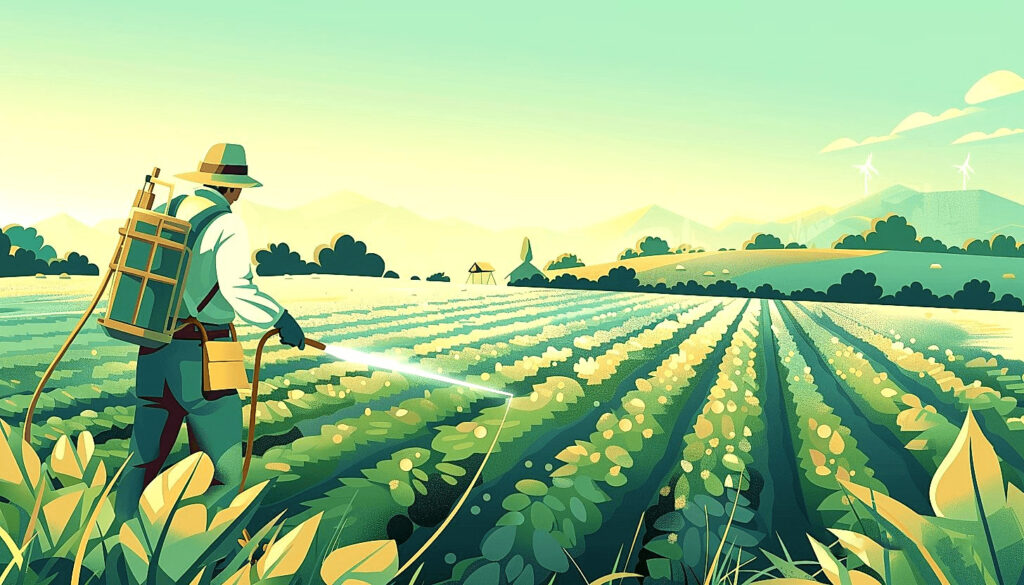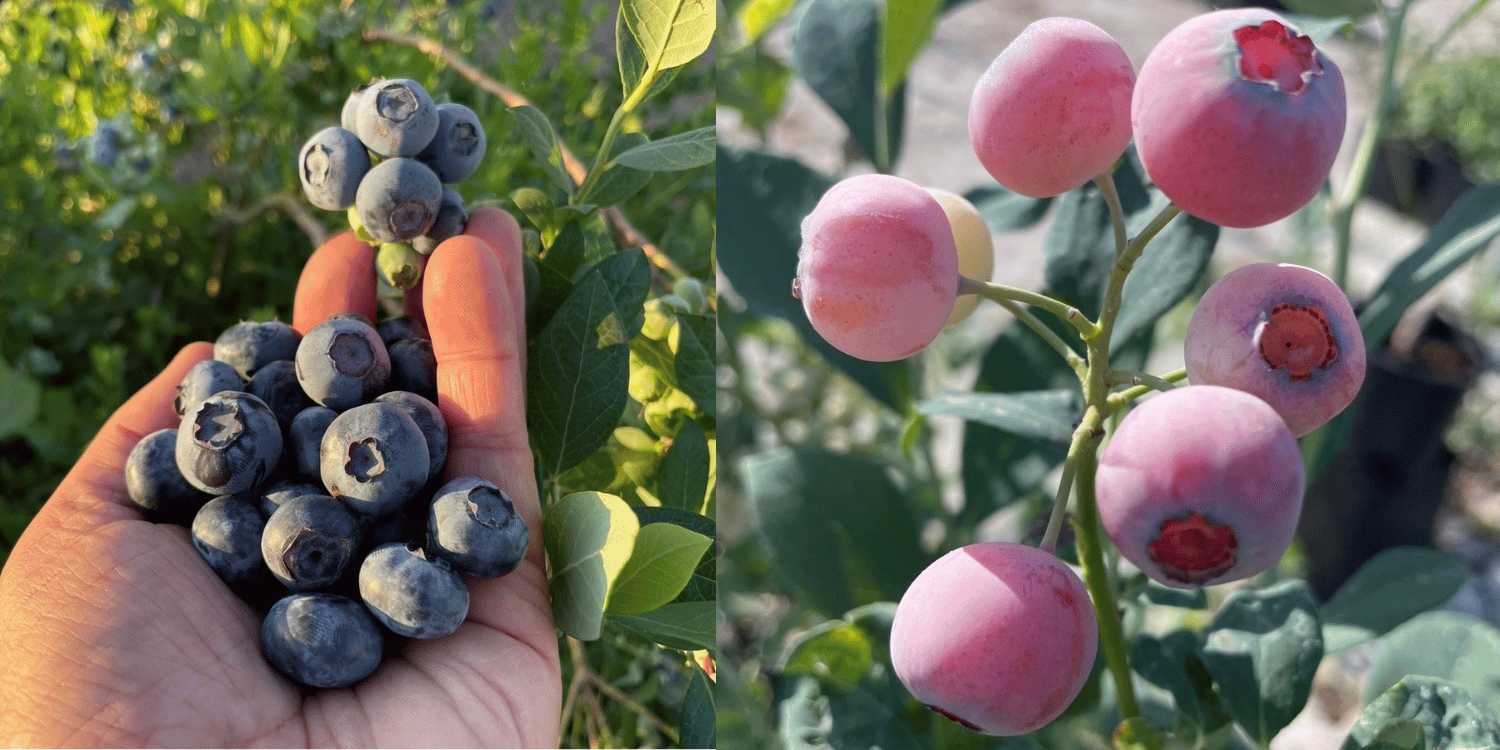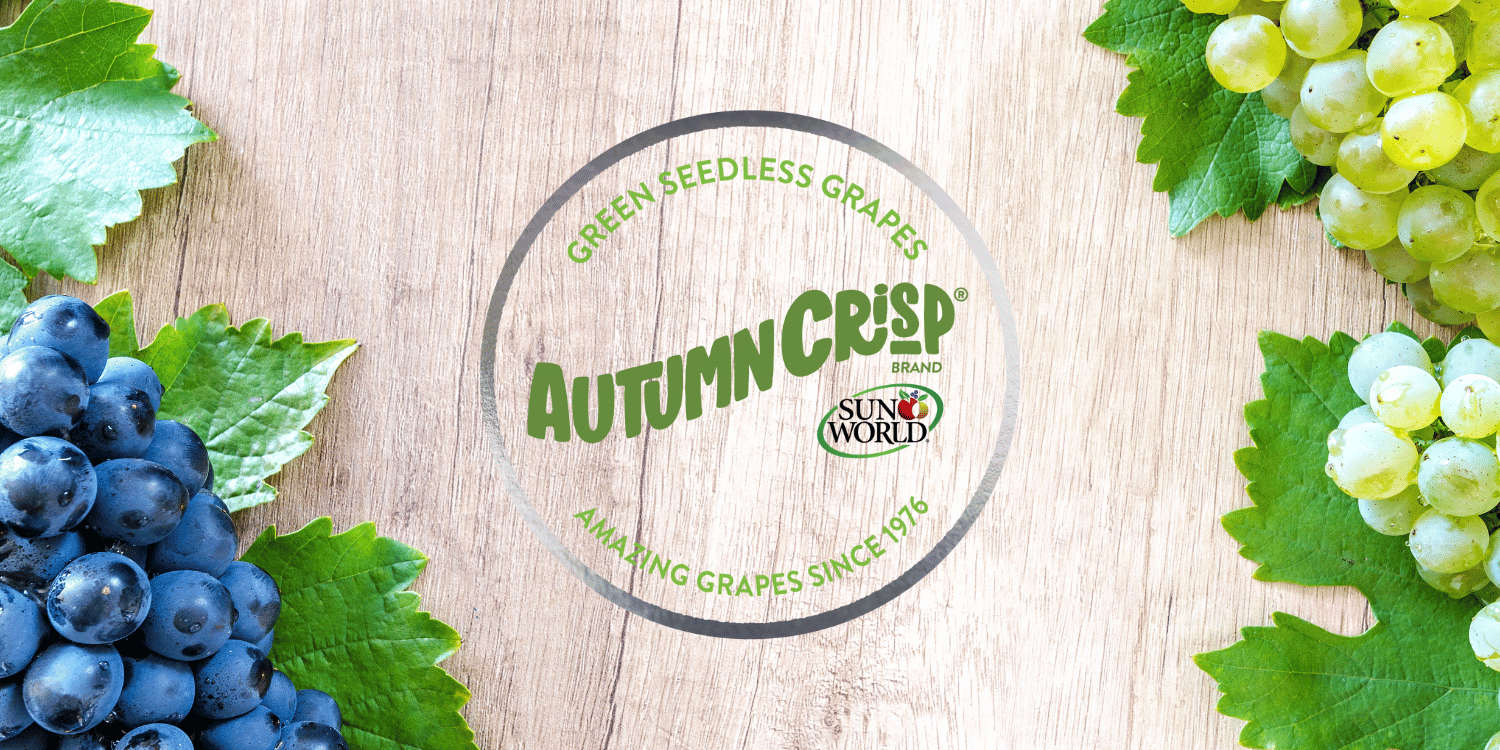Pesticides play a critical role in ensuring agricultural productivity and food security around the globe.
However, strict regulations have emerged due to environmental and human health concerns associated with these chemicals.
These regulations have sparked a significant shift in traditional farming practices.
Farmers are now grappling with the challenge of maintaining crop yields while adhering to these new guidelines.
This has led to the exploration and adoption of more sustainable and eco-friendly farming methods.
Understanding the implications of these regulations can offer insights into future agricultural trends and policies.
- Regulations on pesticides increases crop production costs.
- Farmers are adopting biological pest control methods.
- Pesticide regulations result in decreased biodiversity in farmlands.
- There’s a risk of development of pesticide-resistant pests.
- Regulations enhance farmers’ training on safe pesticide use.
While the effects of pesticide regulations on farming practices are important, there’s a wealth of interconnected topics we’re excited to shed light on in upcoming sections.
We believe that understanding the larger context, such as the role of governments and agricultural organizations, greatly enhances the value derived from our discussion.
Our aim is to also create a comprehensive view that not only reveals the challenges faced by farmers but the solutions being implemented worldwide as well.
Let me tell you, stay tuned as we explore these nuanced aspects that are crucial to framing the overarching conversation around pesticide use and regulations in farming.
Contents
Impacts Of Pesticide Regulations On Farming Practices
1. Increased Costs of Crop Production
In Short: Pesticide regulations, essential for environmental sustainability, can increase crop production costs due to compliance expenses, the shift to eco-friendly pest control methods, and required training. These costs, combined with the potential reduction in crop yield, puts financial pressure on farmers who must spend more to produce less.
As any farming professional can attest, the implementation of pesticide regulations often leads to increased costs of crop production.
This is due to several interconnected factors which span across financial, technical, and environmental scopes.
The first and most direct effect of pesticide regulations is the upfront cost of compliance.
These include costs related to acquiring permits, conducting necessary testing, and implementing adapted farming practices which abide by the new rules.
Of these changes, perhaps the most labour intensive and financially challenging is the shift towards environmentally friendly pest control methods.
In many instances, traditional pesticides are banned due to environmental concerns, requiring farmers to invest in alternative approaches.
Biological control methods, though effective and environmentally sound, can often be more expensive than their chemical counterparts due to the complexity of the processes.
Moreover, regulations on pesticides introduce another financial burden – specialized training.
Farmers must often invest in training courses to ensure they’re up-to-date with new pesticide use protocols.
Now, let’s dig in into some of the specific factors contributing to these increased costs.
- Firstly, the cost of purchasing new equipment needed to apply alternative pest control methods can be quite hefty.
- Secondly, there’s an imperative need for additional labour to implement and maintain these new practices, further exerting financial pressure.
- The increased time investment required in monitoring and managing biological control agents also adds to costs.
This is not even mentioning the unwelcome potential for decreased crop yield.
When transitioning to new farming practices, there’s a risk that these methods may not be as effective as traditional pesticide use, leading to a lowered crop yield and, in turn, reduced profits.
Reduced yield and added expenses mean that farmers are often squeezed on both sides – they must spend more to produce less.
Pro Tip: Implementing pesticide regulations can significantly increase the cost of crop production due to compliance costs, the need for specialized training, and the necessary investment in more expensive, environmentally-friendly pest control methods.
It’s a difficult balancing act that many farmers are forced to perform due to the current imperative for environmentally conscious farming.
Overall, while pesticide regulations are undeniably necessary to ensure environmental sustainability, they can directly lead to an increase in the costs associated with crop production.
2. Adoption of Biological Pest Control Methods
In Short: Biological pest control methods, including predator and parasite introduction and microbial pesticides, offer an environmentally friendly alternative to chemical pesticides, reducing air and water pollution. While the implementation of these methods requires careful understanding of pests and biological agents, with potential for location-specific and invasive challenges, they promote sustainable agriculture and contribute to biodiversity.
Among the numerous alternatives to traditional pesticides, one possible solution lies within the realm of biological pest control methods.
As pesticide regulations tighten, many farmers are forced to consider these alternative methods, bypassing the potential harm caused by chemical pesticides.
Biological pest control involves the use of living organisms, typically predators and parasites, to manage pest populations and reduce crop damage.
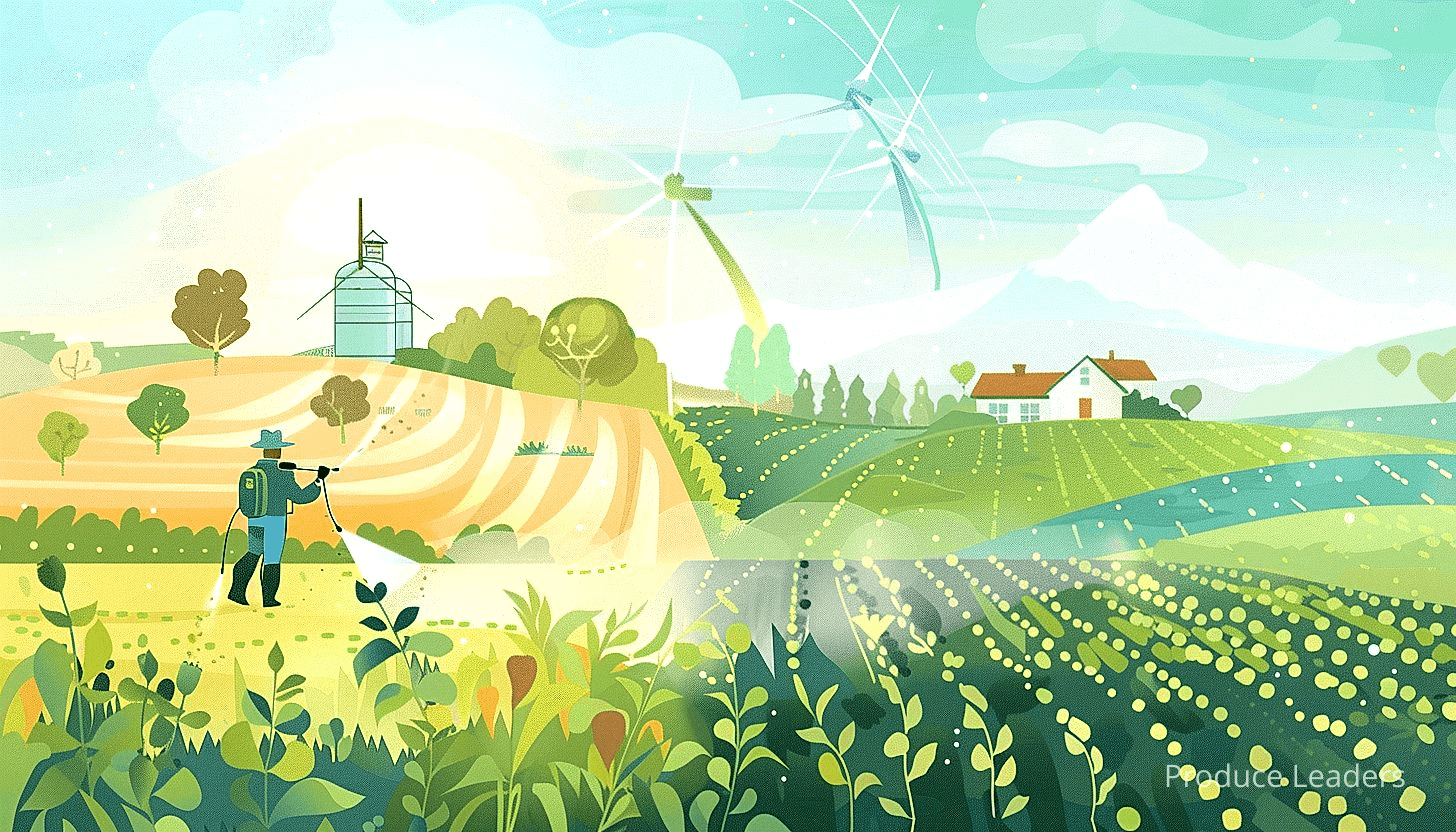
It is an environmentally friendly choice, contributing to a reduction in air and water pollution caused by overreliance on harsh chemical pesticides.
Let’s take a moment now to look into a few notable types of biological pest control methods:
- Predator introduction: This involves releasing natural predators of pests into the farming environment.
- Parasite introduction: This method uses parasites that attack and kill pests, reducing their populations.
- Microbial pesticides: These are bacteria, fungi, or viruses that specifically target pests.
However, the adoption of biological pest control methods is not simple and requires a detailed understanding of both the pests and the biological agents being introduced.
It often requires a significant investment in time and resources to accurately identify pest species and their natural predators or parasites.
Further, biological control methods are often location-specific, meaning a method that works in one area may not necessarily be effective in another.
While these methods can offer a sustainable alternative to chemical pesticides, they can also present their own challenges.
For instance, the introduced organism may become invasive, upsetting the balance of the local ecosystem, or it may not survive in the new environment.
However, it is worth noting that such issues can often be mitigated with careful planning and monitoring.
Despite these challenges, the adoption of biological pest control methods is a step towards sustainable agriculture.
Important: Biological pest control methods, which involve the use of predators, parasites, and microbial pesticides to manage pest populations, are considered an environmentally friendly alternative to chemical pesticides; yet, they require a detailed understanding of the pests and biological agents, substantial time and resources, and careful planning and monitoring.
These practices align with the objectives of many pesticide regulations, which aim to reduce the environmental and health impacts associated with chemical pesticides.
Thus, through the adoption of biological pest control methods, farmers are not only complying with regulations but also promoting a healthier environment and contributing to biodiversity.
3. Decreased biodiversity in farming areas
In Short: Pesticide regulations, while vital for crop protection, inadvertently decrease biodiversity in farming areas by killing beneficial organisms along with pests. This loss of biodiversity leads to reduced pollination, less fertile soil, increased pest outbreaks, imbalances in the ecosystem, and promotes harmful monocultures, emphasizing the need for sustainable, alternative agricultural practices.
The introduction of pesticide regulations has many impacts, one of which is decreased biodiversity in farming areas.
The diversity of species plays a important role in crop growth and the health of our agricultural ecosystems.
Biodiversity acts as the natural regulator of insect populations, including pests, by promoting their natural predators.
However, the extensive use of pesticides, driven by the need to meet regulatory standards, can lead to a reduction in the diversity of species present in these agricultural areas.
These chemicals don’t distinguish between beneficial organisms and the intended targets – the pests. Therefore, many beneficial insects and organisms are adversely affected.
Let’s consider the effects of the loss of biodiversity on farmlands.
- Pollination: The decline in biodiversity could lead to a reduction in the number of pollinators, which are essential for the reproduction of most crops.
- Nutrient cycling: Soil organisms play a crucial role in cycling nutrients in the soil, and reducing their numbers can make soils less fertile.
- Pest outbreaks: Biodiversity often acts as a natural control for pests by promoting their predators. With less biodiversity, there might be larger outbreaks of pests.
Furthermore, the heavy usage of pesticides often leads to an imbalance of the ecosystem, causing secondary pest outbreaks and resistance among some pests to some pesticides.
These spiraling issues often require the application of more pesticides, leading to a vicious and costly cycle.
This decrease in biodiversity can also lead to an increased rule of monoculture, an approach in which only one crop is grown on a large scale.
Monocultures contribute to the loss of biodiversity and are also more susceptible to pest infestations and diseases, which would necessitate even more pesticide use.
Therefore, although pesticide regulations are implemented to minimize the damages caused by pests, they may unintentionally exacerbate the loss of biodiversity and trigger more ecological issues down the line.
Pro Tip: To safeguard biodiversity and promote sustainable agriculture, consider using alternative farming practices and biological control methods, rather than relying heavily on pesticides which may decrease biodiversity and disrupt the ecosystem.
Despite the obvious need for pesticides in ensuring food security, it’s essential to consider that agricultural practices must also contribute to the mechanism of sustainable development.
Devising alternative agricultural practices and promoting biological control methods that safeguard biodiversity while achieving the desired crop yield might be the balance we need.
4. Risk of Development of Pesticide-Resistant Pests
In Short: Excessive use of pesticides risks the development of pesticide-resistant pests, threatening global food supply. Ensuring responsible usage, implementing tighter regulations, continuous research, and farmer training can mitigates this risk, maintaining the balance between immediate pest control and future farming sustainability.
Pesticides can play a significant role in crop protection, but their excessive use comes with major risks, one of the most concerning being the development of pesticide-resistant pests.
This alarming trend threatens the global food supply, thereby complicating farming practices and making the regulation of pesticide use all the more critical.
The widespread and consistent use of pesticides can lead to some pests evolving and becoming resistant to these substances over time.
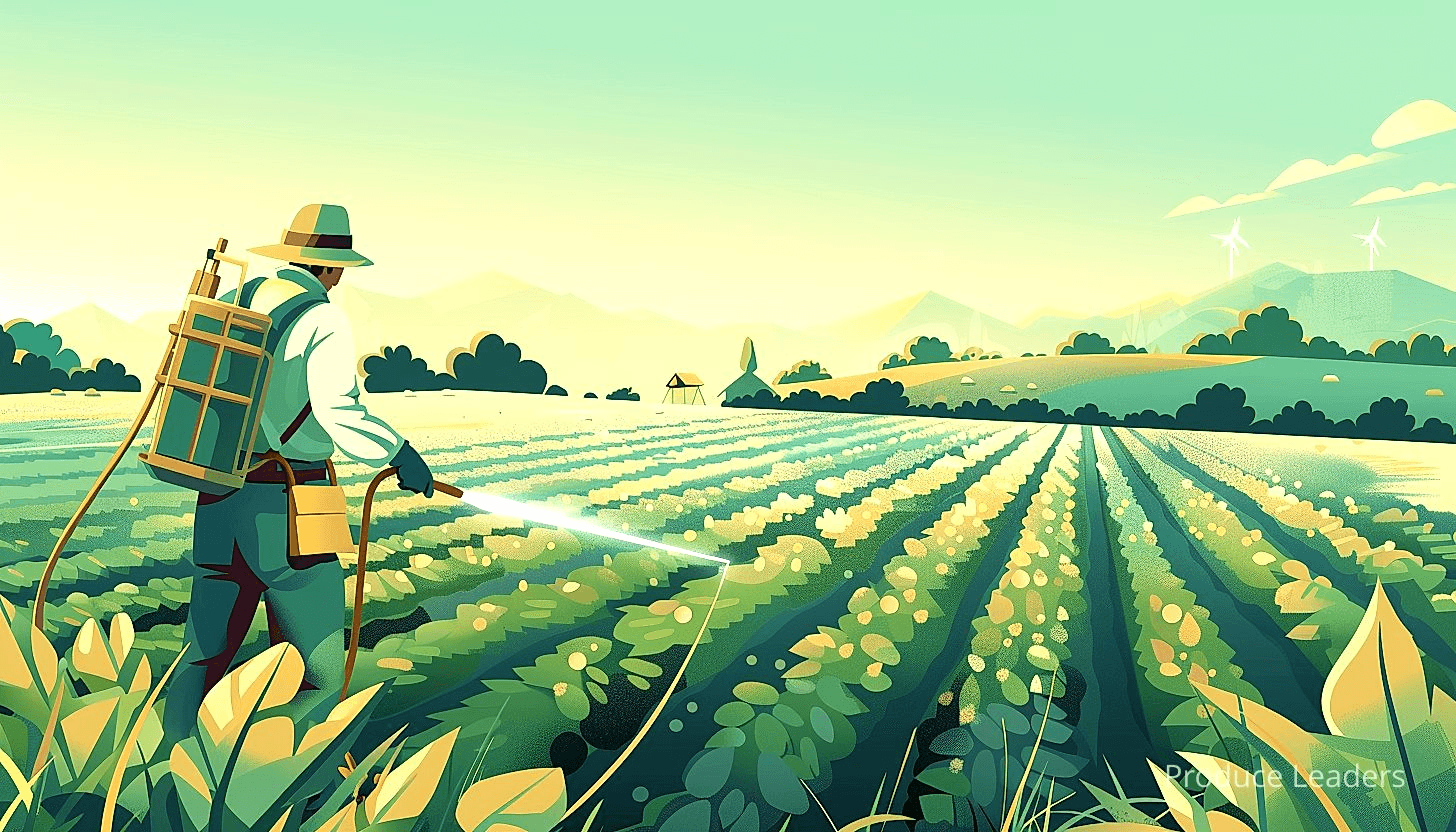
Pests develop resistance as a survival response when they are repeatedly exposed to lethal concentrations of pesticides.
This is an issue of natural selection, where pests that can somehow withstand the chemical onslaught pass these resistance genes onto their offspring, leading to entire populations of pesticide-resistant pests.
Pesticide resistance is not a phenomenon limited to a single group of pests or a particular region.
It is a global issue that affects a wide variety of pests including insects, fungi, bacteria, and even rodents.
Pests, in their need for survival, can develop an incredible ability to overcome the toxic effects of pesticides.
Understanding the development of resistant pests, we can identify several factors contributing to this problematic phenomenon:
- Overuse of pesticides, leading to increased exposure for pests.
- Improper application of pesticides, not adhering to recommended guidelines or concentrations.
- The use of the same type of pesticide for a prolonged period, giving pests more opportunities to develop resistance.
- Insufficient amounts of pesticides that kill susceptible pests but allow resistant ones to survive and reproduce.
Existing pesticide regulations need to consider these factors and aim for a more sustainable approach to pest control.
Through the implementation of tighter regulations on pesticide use, farms can minimize the risk of developing resistant pests, thus enhancing the long-term viability of their crops.
The development of pesticide-resistant pests is a nuanced and complex issue with deep implications for global food production, necessitating continuous research and effective policy-making in its address.
Important: One of the major risks of overuse and improper application of pesticides is the creation of pesticide-resistant pests, a global issue that can threaten the food supply and requires continuous research, effective policy-making, and responsible farming practices for its solution.
Enhanced farmer training and education on the proper and responsible use of pesticides can also play a pivotal role in this regard.
The phenomenon of pesticide resistance serves as a pressing reminder for the importance of responsible farming practices and the challenges of maintaining a balance between immediate pest control needs and the future sustainability of farming.
5. Enhanced Farmers’ Training on Pesticide Use
In Short: Pesticide regulations drive an increased need for enhanced farmer training, not only on farming practices directly impacted but on broader management skills and pesticide knowledge. The training focuses on understanding pesticide impacts, making informed decisions on usage, learning about alternatives, and complying with regulatory changes.
The impact of pesticide regulations should be considered not only based on the farming practices they directly influence but also on the broader range of skills and knowledge farmers employ in their work.
Training in the proper and most effective use of pesticides forms a critical aspect of the overall strategy for managing pest populations and promoting sustainable farming practices.
One significant result of stricter pesticide regulations is the increased demand for enhanced farmer training.
Firstly, there is a greater need for understanding of the regulated pesticides concerning their impacts on the ecosystem.
This can be encompassed in farmers’ training programs to allow them to make more informed decisions about which pesticides to use and when and how to use them.
Next, the implementation of regulations often requires farmers to undergo specific training to ensure compliance with the new rules.
This can involve learning about the alternative prophylactic and therapeutic options available and understanding the potential risks and side effects of each therapy.
Let’s dig in into some of the critical areas that farmers’ training might need to cover:
- Pesticide selection: Understanding the different types of pesticides, their uses, and their potential impacts on crops and the surrounding environment.
- Pesticide application: Learning how to apply pesticides correctly and safely to mitigate potential negative effects on human health and the environment.
- Regulatory compliance: Keeping up-to-date with changes to pesticide regulations to ensure ongoing compliance.
- Integrated Pest Management (IPM): Emphasizing the use of a variety of pest control methods, including biological and cultural practices, alongside pesticide use.
Farmers also have the opportunity to share their practical experiences and insights with others in the sector through collaborative training forums.
These provide valuable spaces for the exchange of knowledge and expertise which can lead to the development of more sustainable and effective farming practices.
Importantly, the enhanced training enables farmers to make the most of the tools they are permitted to use under the regulations.
Pro Tip: As a farmer, enhanced training on the regulated use of pesticides, including their selection, application and regulatory compliance, can lead to more informed decisions and improved farming strategies.
By understanding the science behind these tools, farmers can improve their yield and profit margin.
Thus, the impact of pesticide regulations extends beyond the direct effects on farming practices to those indirect impacts seen in the increased demand for farmer training and the potential for improved farming strategies as a result.
The Bottom Line
Understanding the impacts of pesticide regulations on farming practices is essential for developing sustainable and health-friendly agricultural systems.
Rapid advancements in technology and a deeper understanding of the ecological health give us an opportunity to streamline these regulations and ensure that beneficial practices are properly incentivized.
While certain existing rules may pose challenges for farmers, there is ample room for adjusting these in a manner that supports both the economic aspects of farming and the environmental health.
Let me tell you, it’s safe to say that pesticide regulations, if implemented effectively, can greatly contribute to revolutionizing farming practices, promoting environmental safety, and fostering public health.

